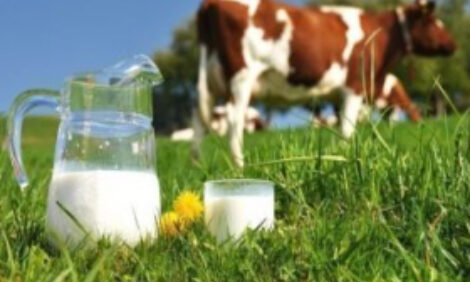



Antibiotic resistance: what is animal agriculture's role?
Dr Scott McDougall, professor at Massey University and research veterinarian at a private veterinary practice in New Zealand, spoke at the international meeting for the National Mastitis Council about the growing concern of resistance stemming from the use of antibiotics in animal agriculture.There's been a lot of media around the use of antibiotics in animal agriculture and concerns particularly in the medical world that resistance could be being created in animals because of our antibiotic use and that could be being transferred from animals to humans, said Dr McDougall.
"Now the reality is that's probably not the case. In fact, the majority of resistance that's in humans is because of human prescribing and movement of bacteria and resistance change around human populations," he said. "But having said that, as responsible users of antibiotics in the dairy industry, we do need to be aware of why we're using antibiotics, how we're using antibiotics and be seen to be doing the right thing and in fact do the right thing about antibiotic use."
The key messages Dr McDougall conveyed are to only use antibiotics when a bacterial infection has been identified in the animal and when it is known that the antibiotic being used will be effective against the particular pathogen you are treating.
"What that means practically for veterinarians and producers is that we need to be able to diagnose the disease correctly, understand what the disease is, then choose the right drug to use for the right period of time," he explained. "But, what it always means is that we need to focus on prevention. If we can reduce the number of animals that are infected, we can reduce the amount of antibiotics we use and therefore, reduce the risk that we might create antibiotic resistance."
His message to conference attendees included a focus on disease prevention and good husbandry and management, including feeding and a clean, dry environment.
"From a mastitis point of view, it means having a good milking machine, a well-trained staff and using things like teat antisepsis in an appropriate way," he noted. "It's also doing good diagnostics - choosing the right cows to treat or in fact not treat."
Antibiotic use in the dairy industry is low, relative both to humans and to other animal species, he said. Yet, there remains a responsibility as veterinarians and as producers to ensure the health and safety of our animals, but at the same time not overuse or abuse antibiotics.
"We're in it for the long haul, and we want to be able to treat our animals in 10, 20 or 100 years’ time. If we do get antibiotic resistance in animals, we may be limited in what we can do," Dr McDougall said. "There's a risk the public will be concerned about antibiotic use and we may see the regulators/government step in and say, 'Sorry, you can't use these drugs anymore.' There would be real animal welfare implications because we may not be able to treat animals effectively. Good stewardship or prudent use of antibiotics is really important. As an industry we do a reasonably good job now, but there's still room for improvement."
Global Tightening of Regulations
"We've seen a lot of change in the last five or 10 years," he noted. "The Nordic countries, I guess, are the world leaders in this space, they've been quite controlled in the way they use antibiotics. We've seen a major change in the Netherlands in the last 10 years, where they've seen about a 65 percent reduction in antibiotic use because of concerns about some of these resistant bacteria."
In other parts of the world, rates of change vary. For example, in New Zealand, Dr McDougall explained they are experiencing political and/or community pressure on antibiotic use, but it is currently not government regulated.
"As a veterinarian profession and as farmers, we are trying to move forward and do a better job, so that we've got the right to operate and demonstrate to the public that we really are doing the right thing," he concluded.
For information about ways to identify mastitis causing pathogens, click here or connect to the Thermo Fisher Scientific Cattle Resource Center.




